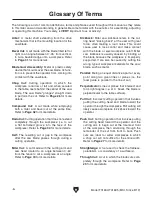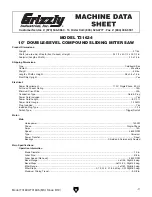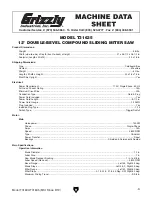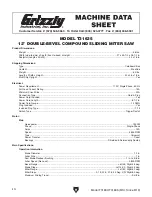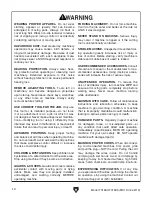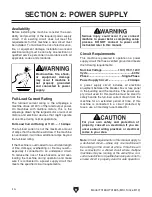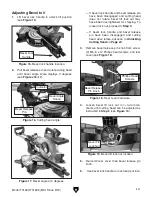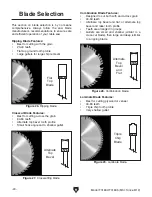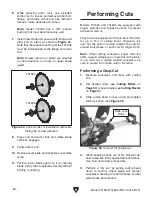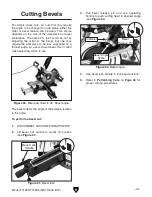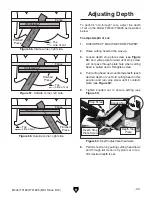
-20-
Model T31634/T31635 (Mfd. Since 8/19)
Dust Collection
Minimum CFM at Dust Port: 100 CFM
Do not confuse this CFM recommendation with
the rating of the dust collector. To determine the
CFM at the dust port, you must consider these
variables: (1) CFM rating of the dust collector,
(2) hose type and length between the dust col-
lector and the machine, (3) number of branches
or wyes, and (4) amount of other open lines
throughout the system. Explaining how to cal-
culate these variables is beyond the scope of
this manual. Consult an expert or purchase a
good dust collection "how-to" book.
This machine creates a lot of wood chips/
dust during operation. Breathing airborne
dust on a regular basis can result in perma-
nent respiratory illness. Reduce your risk
by wearing a respirator and capturing the
dust with a dust-collection system.
To attach included dust bag to saw:
1. Fit 1½" dust bag port over machine port, as
shown in
Figure 22. Check to see that red
clip is securely closing bag opening.
Figure 22. Dust bag attached to port.
Figure 21. Dust hose attached to dust port.
To connect dust collection or vacuum system
to machine:
1. Fit 1½" hose over dust port, as shown in
Figure 21, and secure in place with a 1½"
hose clamp.
2. Tug hose to make sure it does not come off.
Note: A tight fit is necessary for proper
performance.
Dust Collection Steps
1. Pull head-release knob to disengage cutting
head from locked position (see
Figure 20).
Head Release
Knob
Figure 20. Releasing cutting head.
Unlocking Cutting Head
When mounting your miter saw to a workbench
or with other stationary use, a vacuum system
with a hose is best for keeping dust clear. If your
miter saw is moved from job site to job site, the
included dust bag may be used as an acceptable
temporary alternative.
Summary of Contents for T31634
Page 64: ......

